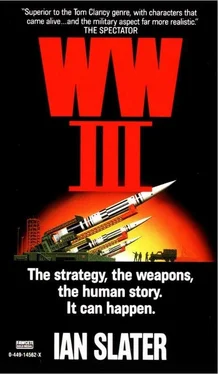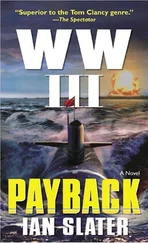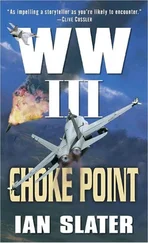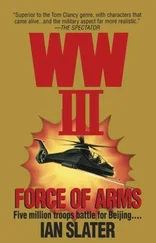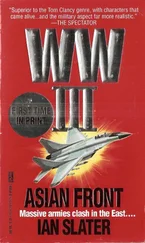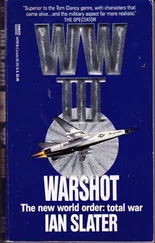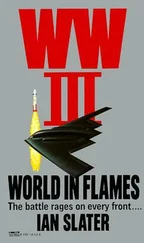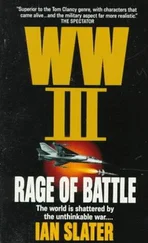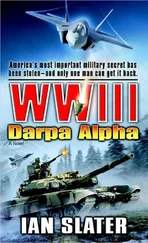In Taegu the NKA infiltrators didn’t bother to set up mortars because of more frequent patrols operating out of the air base itself and from Camp Carroll ten miles away. Instead they simply hijacked four three-ton trucks, shot the drivers, and crashing the mesh perimeter, drove directly onto the tarmac into the line of twenty-five parked Cobras, demolishing $120 million worth of aircraft and ordnance in less than eight minutes.
At the same time, Osan-ni ammunition dump for the Koon-ni air range on the west coast south of Seoul blew when two of the NKA’s KIS (Kim Il Sung’s) “suicide” squads drove a one-and-a-half-ton jeep packed with dynamite through the checkpoint, killing the two MPs on the main gate before slamming into the dump. The shock waves of the Osan-ni explosions were felt several minutes later in Seoul, the pall of coal-black smoke rising ten thousand feet, curdling virgin-white cumulonimbus that were sure to bring more rain.
* * *
“Hope the cavalry arrive in time,” Cahill said grimly from the control bunker, whose atmosphere had rapidly changed from alarm to near panic as the blue aura normally cast about the OPS room by the big board was increasingly pierced by the flashing of red lights, each one signifying another position overrun by the NKA troops, some of whom were now only nine miles from Seoul.
Cahill ordered the detonation of all demolition charges along the Uijongbu-Seoul highway. It was the first in a series of hard decisions. It meant that eight thousand U.S.-ROK rear guard units fighting their way down the highway were lost. But at least the demolition would force Kim’s armored columns off the roads into the flooded soft paddies, and by that time the “cavalry,” planes from the Seventh Fleet and B-52s from Okinawa, would be overhead, “pounding the crap,” as Cahill put it to General Lee, out of the NKA armored spearheads; the tanks, especially the lighter PT-76s, would be sitting ducks until the NKA could move the rubble of the demolition.
“You think the fleet planes can turn it around?” asked Lee quietly, determined to keep the tremors of impending defeat out of his voice. “How about the NKA’s mobile SAM sites?”
“They’ll get a few of our boys, no doubt,” answered Cahill calmly. “So will their fighters, but the MiG 23s are no match for our F-18s and the ‘Smart’ bombs. Anyway, General, our fly-boys are the best. And yours, of course. Best planes. Best-trained people in the world.”
This was all true, but what Army General Cahill had overlooked, not surprisingly given the myriad complexities of modern conventional warfare, was that the laser-guided “Smart” bombs can only be smart when a laser beam can be bounced off enemy targets by “real time” laser designators, or target markers. That is, a mobile laser source, like the man with a mirror signaling the cavalry in the old West, had to be in the area where the aircraft would be attacking. In any event, the NKA, fearful of the U.S. dominance of the air in both the earlier Korean, and Vietnam wars, knew this well, and its artillery, in close support behind its advancing armor, was laying down heavy hexachloroethane shells, producing dense curtains of smoke which played havoc with a laser beam, slicing it up into segments, in effect slicing up the signal.
* * *
Outside Uijongbu, Kim’s Fourth Armored was encountering stiff resistance from ROK reservists who had been carrying out maneuvers that morning near Camp La Guardia, two miles from Uijongbu. Reports to Kim’s headquarters indicated that the unexpected ROK resistance had forced an NKA column off the highway.
ROK rear guard units reported the same thing to Seoul HQ. Cahill was buoyed by the news, by what he called the “first major tactical blunder” Kim had made. Cahill was now convinced that if he could force the other NKA columns off the roads and keep them off until the weather cleared enough for his fighters to zero in, he would halt the entire advance. Stopping Kim’s legendary Fourth Division alone would mean blunting the NKA thrust toward Seoul and giving the hard-pressed retreating U.S.-ROK divisions an enormous psychological lift, for so far the NKA’s Fourth had penetrated the South Korean defenses with such stunning speed that news reports around the world of the latest NKA advance were virtually outdated the moment they were broadcast.
Cahill was equally aware that should he fail and the capital fall, the impact on the ROK, and U.S. prestige, would be devastating, the prestige of the Communists dramatically increased.
Cahill’s hope of help from the air was another dream quickly punctured when a squadron of twelve American F-4 Phantoms managed to scramble aloft out of the chaos and confusion that had once been Seoul’s Kimpo Field. Streaking into the rain-thick sky above the DMZ, reaching Mach 2, they suddenly found themselves in combat with fifteen MiG-23s diving on them at Mach 2.2 from the higher, thinner air. U.S. intelligence had known since late 1985 that, as part of building up the NKA’s overwhelming advantage in numbers of combat aircraft (750 to the South’s 400), Moscow had begun delivering forty-six MiG-23 (Flogger) and SU-7 (Fitter) fighters to North Korea following Kim II Sung’s visit to the Soviet Union the previous spring. And so it wasn’t the appearance of the Russian-built fighters that was a shock to the pilots of USAF’s Seventh Tactical Fighter Wing, but rather the small blips which turned out to be AS-9s, air-to-surface antiradiation missiles. The AS-9, while something of a “loafer” compared to the speed of other air-to-surface rockets, and no threat to the Phantoms, was nevertheless a potent killer of antiaircraft missile sites, and via their on-board computers, ten AS-9s homed in on the ROK’s four Hawkeye and Nike-Hercules batteries. Hurtling in at seven hundred feet a second, the two-thousand-pound missiles failed to take out the ROK’s missiles but wiped out the batteries’ radars, which provided the Hawkeye and Nike-Hercules with their launch vectors. It meant that in the first day of the invasion, ROK’s four surface-to-air missile battalions, as against the North’s fifty-four, were rendered useless.
The loss in fighters to the NKA was seven MiGs shot down by the Phantoms. It was a high price for both sides, but in neutralizing the ROK missile batteries, the North’s MiGs had opened a window for further AS-9 attacks, leaving South Korea woefully understrength in antiaircraft defense.
On the DMZ, elements of the NKA’s Second Armored, held in reserve until Fourth and First Armored had broken out into the South, were now reported crossing the DMZ in force. Despite some determined firefights, Forts Dyer, Cheyenne, and all other forward observations posts in Area 1, from Kumchon in the far west to a point forty-three air miles east beyond Alamo, a third of the entire DMZ, were now overrun. In many of the trenches leading from the U.S.-ROK control bunkers, fighting was hand to hand, and Private Long, so recently wooed by Pyongyang Polly, was one of the first Americans killed in World War III, decapitated by an NKA splinter grenade.
In terms of U.S.-ROK prisoners taken that first day, over seven thousand, the most humiliating of all was the capture of Lieutenant General Hay, commanding officer I Corps, at his Uijongbu HQ while he was in the midst of organizing his eleven ROK divisions and one U.S. division for a counterattack that never materialized.
* * *
In Seoul there was utter panic and confusion as the firing of over two thousand massed guns along the DMZ continued, the 225- and 194-pound high-explosive and white phosphorus shells tearing through the rain-gray air, thudding into the cluster of U.S.-ROK targets in and about the South Korean capital.
Читать дальше
